| Transcondylar distal humerus fractures are usually high energy comminuted difficult fractures, technically difficult to manage. Anatomic reduction, rigid fixation and early motion are desirable, if technically possible. There are a variety of techniques for fixation. Here, Herbert screws were used to secure the two central purely osteochondral fracture fragments to each other and to the proximal humerus. |
| Click on each image for a larger picture |
| 81 year old physically active woman sustained a left elbow fracture in a syncope related fall. |
 |
| Lateral and central fracture component displacement. |
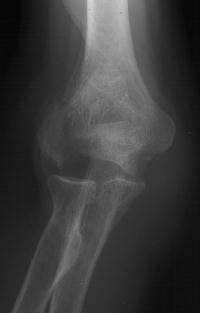 |
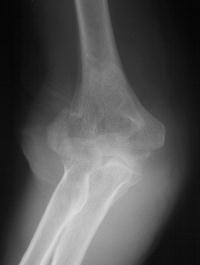 |
| Unusual contour visible at the medial metaphyseal flare. |
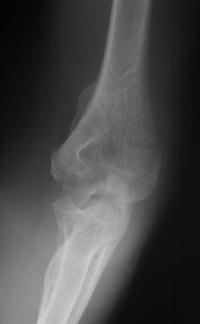 |
| This is seen on the lateral view to be the anterior half of the central articular surface. |
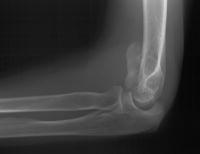 |
| This is the fracture pattern: lateral and central column - Anterior view: |
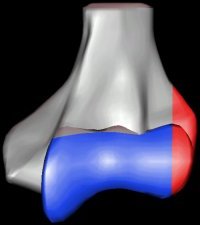 |
| The central column is additionally split into an anterior (blue) and posterior (green) fracture fragments. |
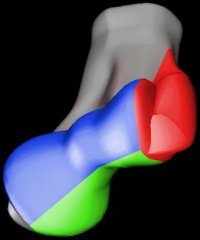 |
| View from below. |
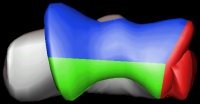 |
| Lateral view. |
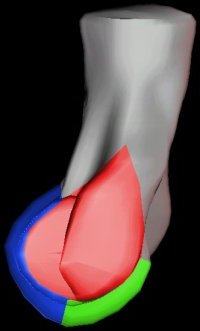 |
| Later in the case, the small medial osteochondral fragment was secured with absorbable sutures (not shown). |
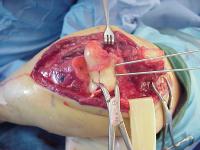 |
| Screws were secured from the central articular component to the more proximal humeral cortices. |
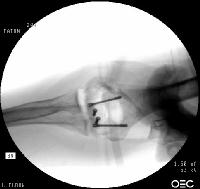 |
| These provided biplanar fixation, eventually with two screws in each direction. |
 |
| The lateral column was then secured with two cannulated screws. |
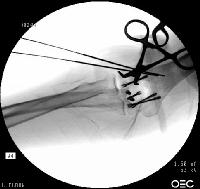 |
| The olecranon osteotomy was closed with a 6.5 mm lag screw and (belt and suspenders) tension band technique. |
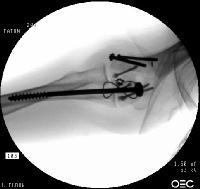 |
| Anatomic reduction. |
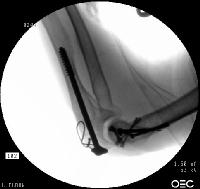 |
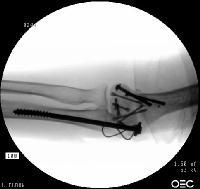 |
| She began immediate protected motion and discontinued splint use at two weeks, despite recommendations to the contrary. These films are two months postop: |
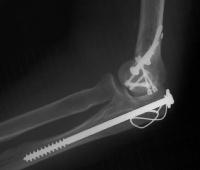 |
| Lateral column not yet fully consolidated on Xray, but clinically healed. |
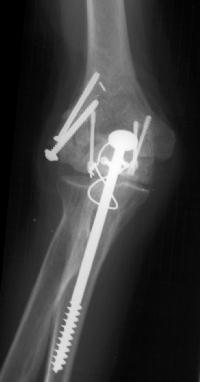 |
| Flexion: |
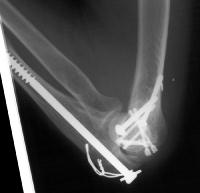 |
| Extension: |
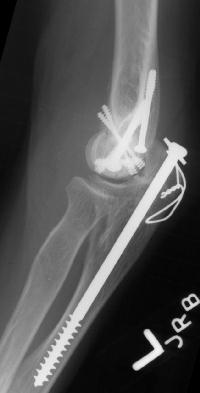 |
| Two months postop, standing in front of the same office door: |
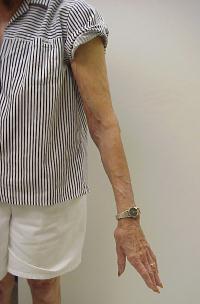 |
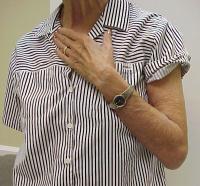 |
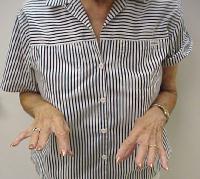 |
 |
| Search for...
transcondylar elbow fracture |
Case Examples Index Page | e-Hand Home |